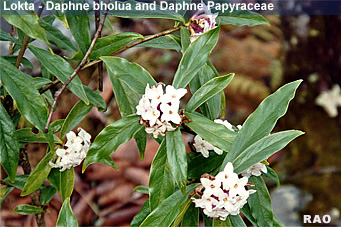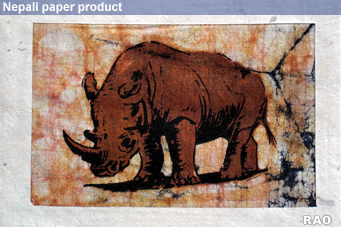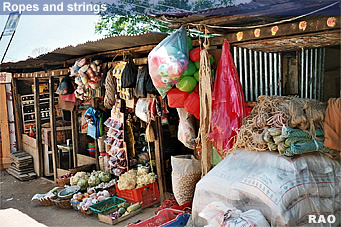 |
|
Nepali
Forests |
 |
A
large number of people are still dwelling in our forests. For their own
use but also for sale they are producing many different goods:
Nepali
Paper (often incorrectly called rice paper)
Our
region is one of the main paper producing areas in the country. You will
find paper makers in and around Bharabise, in Suspa, Bigu and in
the Kalinchowk and Chardung forest ranges, from about December to
the beginning of monsoon.
 |
| The
raw material used is the inner bark of a shrub whose local name is lokta
(Daphne bholua and Daphne Papyraceae). A different plant is Daphne
edgeworthia here called Argheli from which people make ropes and strings. This lokta bark is dried and thoroughly soaked for
1 day. pulp is now placed in a wooden container and stirred with a mixer.
day. After being cleaned from impurities, it is boiled together with Khasru
(oak) ash for several hours. This is the most strenuous part of the
job; it takes 3 full hours tor just 2kg of pulp. |
|
The lokta
pulp is now placed in wooden containers and stirred with a mixer. The
resulting homogenous mass is poured into a bamboo-framed light cotton cloth
which is dipped in pond slowly running a water.This moulding process demands
considerable skill. The frame is put out in the sun and the thinly spread
out pulp will dry in another 2 hours.
The
income of traditional paper maker has a been calculated at about Rs.7 per
day, which is less than that of un-skilled manual labour or porter. Efforts
are being made to improve the quality paper from our area as well as the
marketing arrangements in order to increase the benefits directly accruing
to the producers. The big problem, however, is the decline in the raw material
availability. Only systematic Lokta management or the establishment of
plantations can solve this problem and save this old trade from extinction.
| more
information |
 |
|






